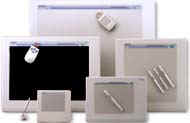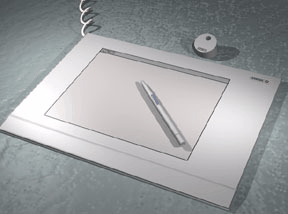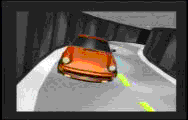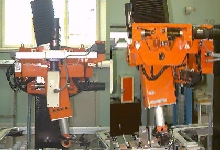|
Applications
|
| |
Safety
Some computer applications have safety
as a top priority.
For example, an air-traffic control system. The computer
system needs to be completely reliable and dependable and the development of
safety-critical systems is a highly specialised field.
|
|
| |
| |
Industrial,
Technical and Scientific uses.
Computers are often used to manipulate large sets
of numbers very quickly. This type of computer use is often referred to as
'number crunching'.
|
|
| |
| |
Weather forecasting.
Large amounts of data (temperature, pressure,
humidity, wind speed and direction etc) are received from all over the world,
and weather maps are produced from which forecasts are made..
|
|
| |
| |
CAD(Computer Aided Design)
| The use of computers for producing designs of
anything from a small electronic component to a large building. |
 |
| Hardware required may consist of a graphics
tablet for input, and a graph
plotter for output. |
 |
Powerful editing features
- change any
part of drawing
- replicate
any section
- use of libraries of components
- instructions for repetitive tasks (macros)
- zooming in
for fine detail
Other facilities may include - mathematical
operations eg calculate volume of object, calculate stresses in building designs
- interface to a machine which actually makes a
3D model
|
|
|
| |
| |
Animation

| Computers are used to produce graphics or
animation for computer games, TV or film use. Graphics packages are used
to create moving pictures one frame at a time. The frames are then put
together to form an animated sequence. |
 |
|
|
 |
Complex 3-D Graphics need to be rendered
so that they can be effectively displayed. This is basically a number-crunching
process and can be done on render farms - a
number of different computers sharing the workload (Example of distributed
processing).
|
|
| |
| |
Industrial
Robots
Robots have
- sensors
which capture information.
- microprocessors
to process the information.
- actuators
which produce movement or switch on/off machinery
Robots are basically microprocessor-based
computer control systems.
eg in a car manufacturing process robots might
- manufacturing components
- assembling / welding parts
- 'fetching and carrying' parts.
- paint-spraying
Sensors
which a robot may have include
- touch
: strain gauges which detect pressure / touch
- sight
: using video cameras; however analysis of images is complex
- sound
: speech recognition
- smell
: chemical analysis techniques; used for detection of gas leaks.
- taste
: biosensors currently under development to detect sweet / sour / salty
- sensors
to detect light; heat; magnetism; radiation; etc

Why use robots?
- they can work in environments hazardous to
humans
- they can tirelessly perform repetitive and
monotonous tasks
- labour costs can be reduced
- quality of work is consistent
- robots can work 24 hours a day so - increased
productivity
|
|
 |
| |